'He's a hard man not to admire'
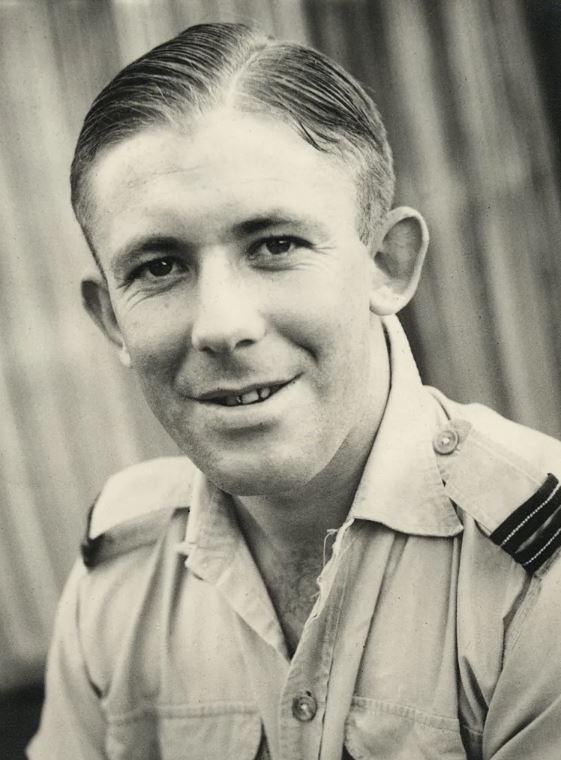
Tom Trumble's grandfather meteorological officer Flight Lieutenant Bryan Rofe. Photos: Courtesy Tom Trumble
It’s February 1942. The Japanese invasion of Timor has begun and plans to evacuate a group of 29 Australian airmen charged with keeping an airstrip operational until the last moment have been thwarted.
Under the leadership of a 24-year-old meteorological officer, the airmen make for remote jungle along the north-west coast of Timor, but all attempts to rescue the group fail.
Starving, their bodies racked with malaria and dysentery and covered in tropical ulcers, the men are driven to the limits of their endurance over 58 days.
Eight of the men are on the brink of death and a 300-strong Japanese patrol has been sent to hunt them down.
All hope seems lost, until they receive a strange signal from the sea – an American submarine has been dispatched to their position, but first they have to get to it.
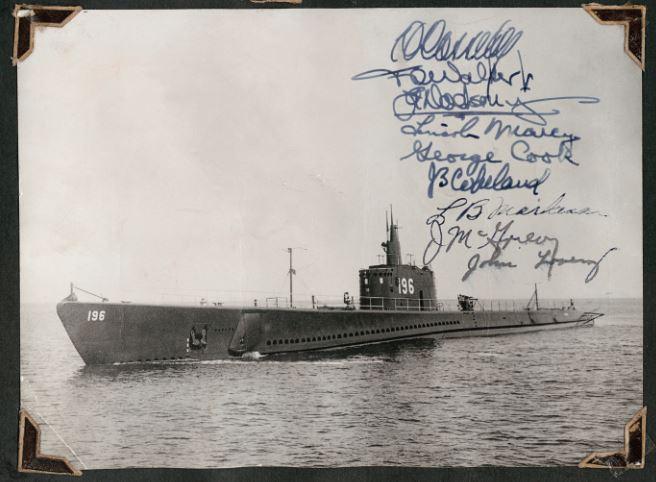
Their remarkable story is brought to life in Trapped, an Australian War Memorial podcast by Melbourne writer and author Tom Trumble.
Over six episodes, Trumble tells the stories of the men who survived, the men who tried to rescue them, and the men who were sent to hunt them down.
“It’s a story of survival, courage, leadership, mateship, and at certain points, cruelty and violence, during history’s bloodiest conflict,” Trumble said.
“But for me this story is intensely personal, because the officer commanding those airmen was my grandfather, Bryan Rofe.”
Trumble never met his grandfather; he died before Trumble was born, but he grew up hearing about his story from his grandmother.
“She would often say she’d never met a man like Bryan Rofe,” Trumble said. “She was very proud of his achievements – both as a wonderful husband and father, and as a man of great professional achievement – and she was determined to keep the legacy of his achievements alive in the minds of his grandchildren, so growing up we had a fairly keen sense of who this man was.”
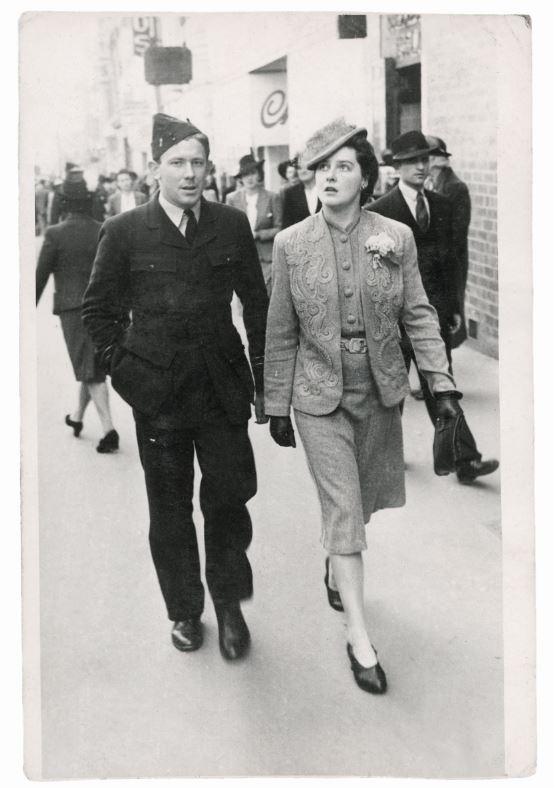
Flight Lieutenant Bryan Rofe and Patricia Rofe on their honeymoon in Melbourne in June 1942.
When Trumble decided to research and write about what happened to his grandfather on Timor, he discovered a remarkable story of survival and escape.
“I’ve always been obsessed with his story and particularly his war experience,” Trumble said.
“He was a great leader – first and foremost – and a fiercely intelligent man. He went on to do amazing things after the war, including becoming director of the Australian Antarctic Division and putting Australia’s first satellite into space, but I was always told that what happened to him on Timor as a 24-year-old meteorological officer with no combat or command experience was really the defining moment of his life and made him the leader that he would become in later life.
“He was a great scientific mind, and one of those individuals who left a mark on the people that knew him … but he was a hard man as well, and was very much of his age. He could be uncompromising and you could see that there was a discernible shift and change in his character after the Timor experience.
“He could be quick to temper and he could be a little bit lacking in tolerance of what he perceived to be weakness or laziness … but I describe him as a great man, and I have nothing but respect for him.
“He’s a hard man not to admire.”
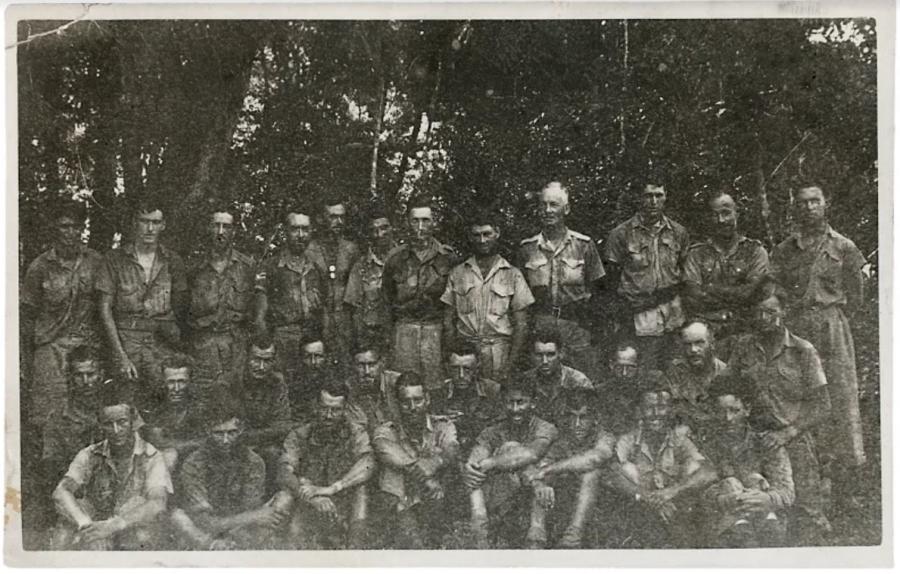
The RAAF rear party awaiting rescue by flying boat, Kapsali, Dutch Timor, 1 March 1942. Back row: George Ettridge, Phil Kean, Clem Clements (AIF), Bob Lloyd, Charlie Gibbs, Bill Smith, Bob Donald, Ted Mitchell, Jock Birchall, Frank Rusconi, Bill Arthur, Colin Humphris. Middle row: Ralph Holloway, Snow Henrickson, Bob Oliver, Jim Sumner, Jim Graham, Len Bourke, Frank Meeking, Ron Bell, Ken Greaves, Wally Grigg. Front row: Peter Thompson, Les Borgelt, Roy Andrews, Arthur Cole, Bryan Rofe, Art Ackerman, Clyde Pappin, Eddie Park.
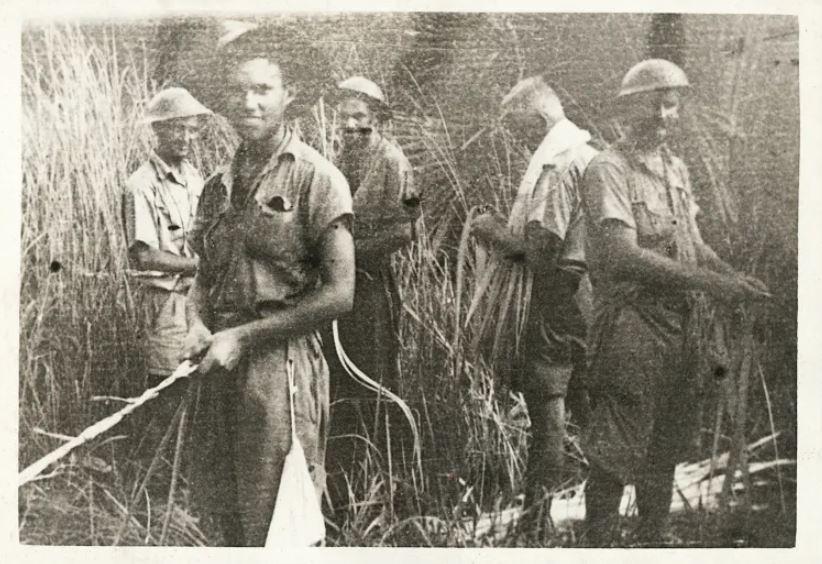
Making rope from rushes to build a raft at the mouth of the River Kapsali. From left to right, Bill Smith, Colin Humphris, Charlie Gibbs, Jock Birchall, and Bryan Rofe.
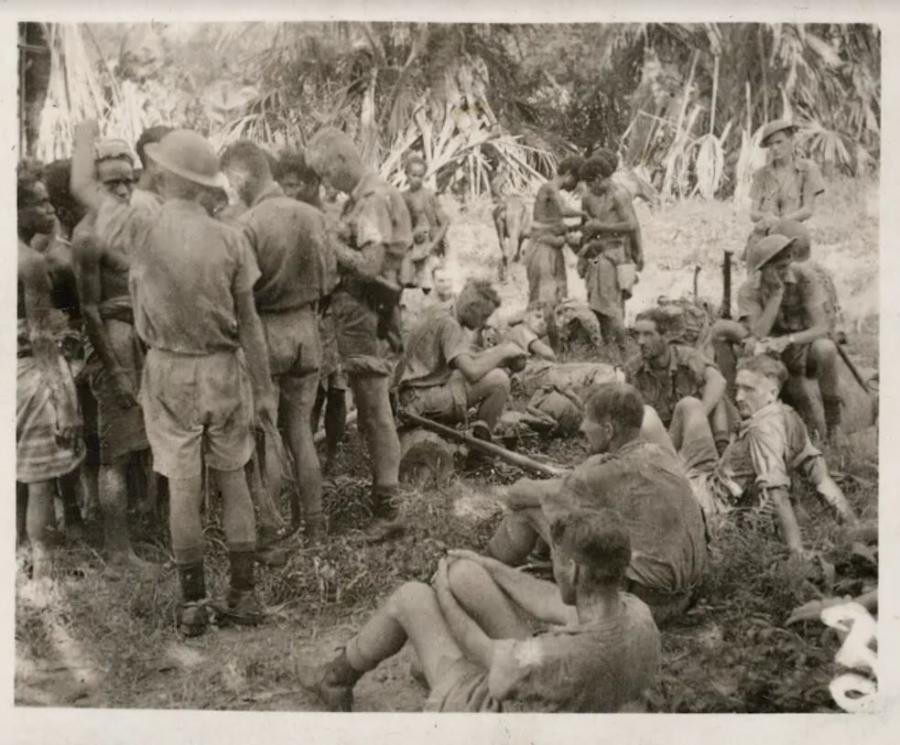
The airmen rest and barter with the people of Naifalo, while Clyde Pappin (arm raised) directs a Timorese man to point the antenna he holds towards Darwin before attempting to send a signal on the transceiver.
Trumble travelled to Timor to follow in his footsteps and met with five survivors of the evacuation while researching his book, Rescue at 2100 Hours, the Untold Story of the Most Daring Escape of the Pacific War.
“These men grew up in the Depression era of Australia and then they were asked to go and serve their country in what I regard as the greatest catastrophe in human history,” he said.
“He never talked about the war with his children – ever – and rarely talked about the war with his wife, but my Mum recalls with great vividness the shocking malaria attacks that plagued him for the rest of his life.
“He’d slip into this trance and relive some of the ordeal that happened to him on Timor; shouting encouragement to his men, or scolding them; telling them to lift their game if they weren’t pulling their weight; or screaming out abuse about the Japanese.
“It was something that was deeply traumatic for him … and he bore a lot of the scars of what we would call post-traumatic stress disorder these days.
“These men went through these horrible experiences, and he suffered greatly because of that, and that’s why I wanted to tell their story.
“It’s something that I keep returning to … and the podcast is like a dream come true. It’s just been a real labour of love.”
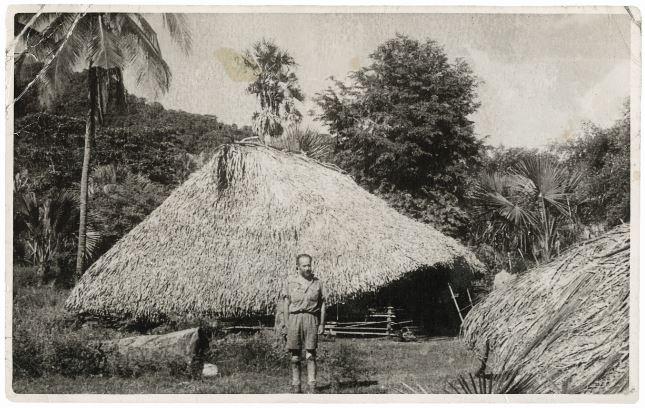
In the villague of Tuakau, Flying Officer Bill Arthur poses in front of two huts, dubbed “The Hyatt” and “The Hilton”.
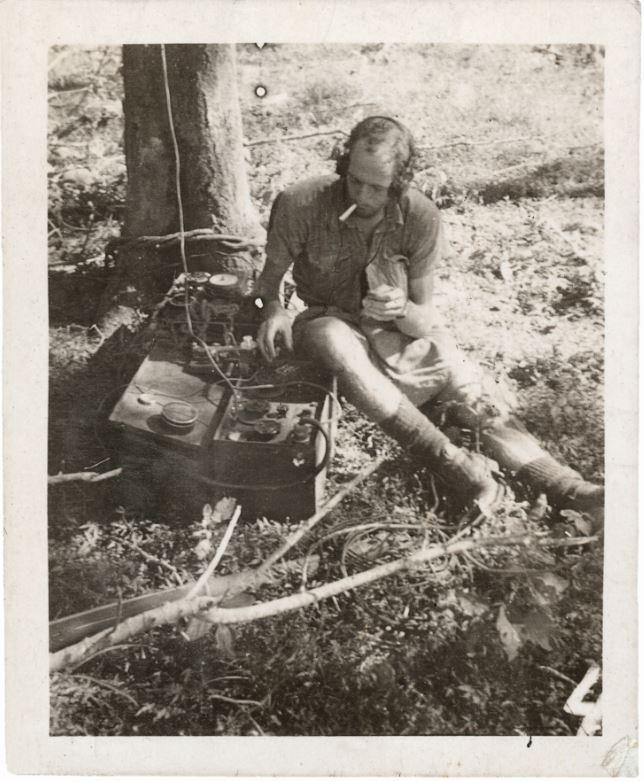
Corporal Ron Bell, the radio wizard and senior wireless electrical mechanic, preparing to signal Darwin.
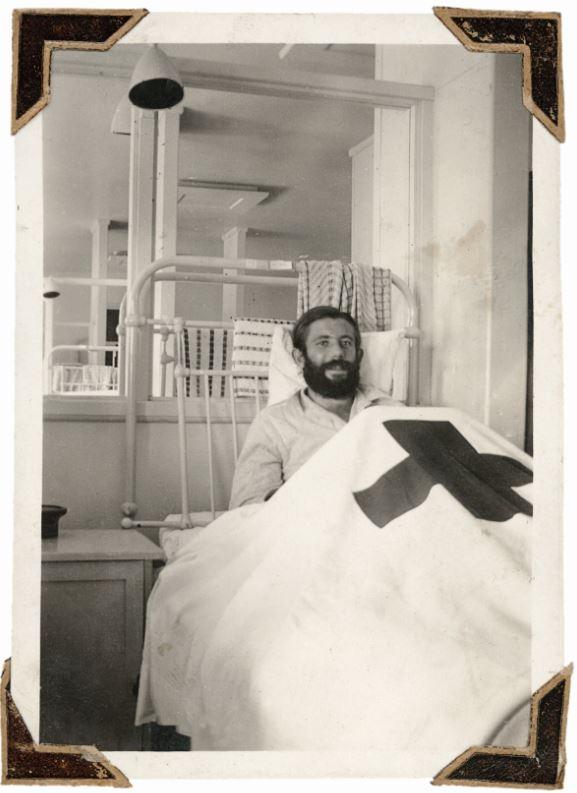
Bryan Rofe recovering in Hollywood Hospital, Perth.
Using diaries of the airmen, wartime records and interviews with survivors, Trumble brings their story to life for a new generation.
“The guys I met all lived into their 90s, and they were unbelievably optimistic,” he said. “They had a real zeal for life, and they all said to me that not a day went by that they didn’t think about what happened to them on Timor.
“It was as if that experience just gave them a wonderful appreciation for being alive, and for how wonderful life could be.
“To me, it’s remarkable, that you can go through something as horrible as what they went through – where they lost half their body weight with malaria, where they were hunted by over 300 Japanese, where they thought they were going to die –and emerge out of that experience grateful for every day.
“I think that’s inspiring … and if the podcast is a tribute to anyone, it’s a tribute to all of those people who were caught up in this story.
“It really is one of the great escape stories of the Second World War.”
Trapped is available here or wherever you get your favourite podcasts.